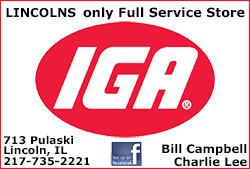|
Many popular sunscreens don't meet
suggested guidelines
 Send a link to a friend
Send a link to a friend
[July 07, 2016]
By Andrew M. Seaman
Nearly 10 percent of all sunscreen sales in
the U.S. occur on Amazon.com, but many of the most popular sun
protection products sold there don't meet standards set by medical
professionals, a new report says.
|
|
 According to the American Academy of Dermatology, sunscreens should
provide broad spectrum protection against ultraviolet (UV) A and B
rays, be water resistant and have a sun protection factor (SPF) of
at least 30. But less than two-thirds of the most popular sunscreens
on Amazon met those standards, researchers report. According to the American Academy of Dermatology, sunscreens should
provide broad spectrum protection against ultraviolet (UV) A and B
rays, be water resistant and have a sun protection factor (SPF) of
at least 30. But less than two-thirds of the most popular sunscreens
on Amazon met those standards, researchers report.
"One of the things I get asked the most from patients is what
sunscreen should they use," said lead author Dr. Steve Xu, of
Northwestern University Feinberg School of Medicine in Chicago.
Dermatologists make recommendations and offer guidelines, but they
can't know what patients do after they leave the doctor's office, Xu
told Reuters Health.
To get a better idea of what people look for when buying sunscreen,
the researchers turned to Amazon.com. In a paper in JAMA Dermatology
July 6, they say nearly three quarters of people in the U.S. have
reported buying beauty and personal care products on Amazon, and
they estimate that 9 percent of all sunscreen sales occur there.

Using Amazon.com's customer rating system, the researchers analyzed
the website's top 1 percent best-rated sunscreens.
Overall, there were 6,500 sunscreens sold on the website. Of the 65
products the researchers analyzed, prices per ounce ranged from
$0.68 to $23.47.
Forty percent - 26 of the 65 top-rated sunscreens - did not meet the
AAD standards.
Approximately 90 percent of the sunscreens claimed to have at least
a 30 SPF and roughly the same proportion were broad spectrum. Only
62 percent of the sunscreens claimed to be water resistant, however.
Customers were most likely to cite cosmetic elegance - feeling,
color and scent - as their main factor for leaving a positive review
for the product. The second most common factor in positive reviews
was product performance.
[to top of second column] |

Xu said the price of sunscreens didn't predict the amount of sun
protection. Also, price didn't factor into how much people liked the
product, given that they were all highly rated.
"I think the important thing is all the products in our cohort are
highly rated," he said. "Everyone likes the cheap products as much
as the expensive ones."
The researchers suggest that dermatologists educate patients about
sunscreen and how to balance marketing claims about cosmetic
qualities with the protection it offers.
"In addition, consumers should be advised to select a product with
broad-spectrum coverage, an SPF of 30 or higher, and water and/or
sweat resistance in the setting of water activities or high ambient
temperatures," they add.
SOURCE: http://bit.ly/29l2a71
JAMA Dermatol 2016.
[© 2016 Thomson Reuters. All rights
reserved.] Copyright 2016 Reuters. All rights reserved. This material may not be published,
broadcast, rewritten or redistributed.

 |